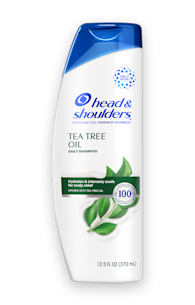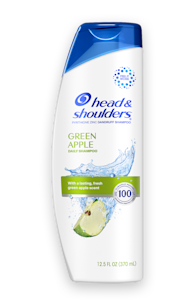DO YOU HAVE SCABS ON YOUR SCALP?

Scalp problems not only cause discomfort and irritability, they can also make you feel self-conscious. Noticing scabs on your scalp is one of those problems. When things aren’t right with your scalp, it can feel like all eyes are drawn to the top of your head. These simple steps will help you heal those wounds, so you can refocus that attention with confidence.
What do scalp scabs look like
Before the solution, we need to identify the problem. Here’s what to look for;
The surface will feel dry, rough and there’ll be a noticeable difference to the surface of the scalp scab compared to healthier areas of your scalp.
It will be harder to touch and there may be many joined together, or smaller scabs dotted about your scalp.
What causes scabs on the scalp?
So, you’ve read the above and you think you have scalp scabs, but how’d they get there? Scabs can develop totally on their own and could be the result of:
dermatological infection, (folliculitis or scalp acne)
parasites like head lice
Scratching or picking
How to heal scalp scabs
There are 2 key things you can do to heal scalp scabs and prevent them from coming back. The first one might seem obvious, but sometimes you don’t even realize you’re doing it - don’t scratch. The second thing is to identify the cause so you can find the right solution for you.
Don’t scratch. We might not even realize that we’re picking or scratching our scalps - it’s an automatic, subconscious reaction to itching, discomfort, inflammation or stress - but often, this can lead to scabs.
Scratching can briefly relieve itchiness and make us more comfortable in that moment, but it doesn’t address the root cause of the issue. In fact, it can make your problems worse by creating a wound that can become infected, and delay healing.
Sometimes people scratch in their sleep, so it’s difficult to stop. If suffer from an itchy scalp at night and think this might be happening to you, try minimizing the damage by trimming your fingernails and sleeping with a pair of gloves.Rule out causes, like head lice. If you have scalp scabs, it’s useful to rule out head lice first. After that, keep looking at your scalp. Are there any signs of folliculitis (a common skin condition caused by a bacterial or fungal infection) or scalp acne? Both of these look like round raised red bumps or white-headed pimples. If not, you may have another scalp condition that causes itching, like dandruff or seborrheic dermatitis, especially if you notice that your scalp is flaky.
It’s important to let your scabs heal naturally - resist the temptation to pick, since this could delay healing and possibly lead to an infection.
How to improve your overall scalp health
Minor scalp issues, like dandruff or itchy scalp, can be easily managed with regular use of a good dandruff shampoo like Head & Shoulders Citrus Fresh Shampoo. If it’s dandruff, you should see improvement within 3 weeks.
If you think it might be something other than dandruff, you should visit your dermatologist for a treatment plan just to be on the safe side.





